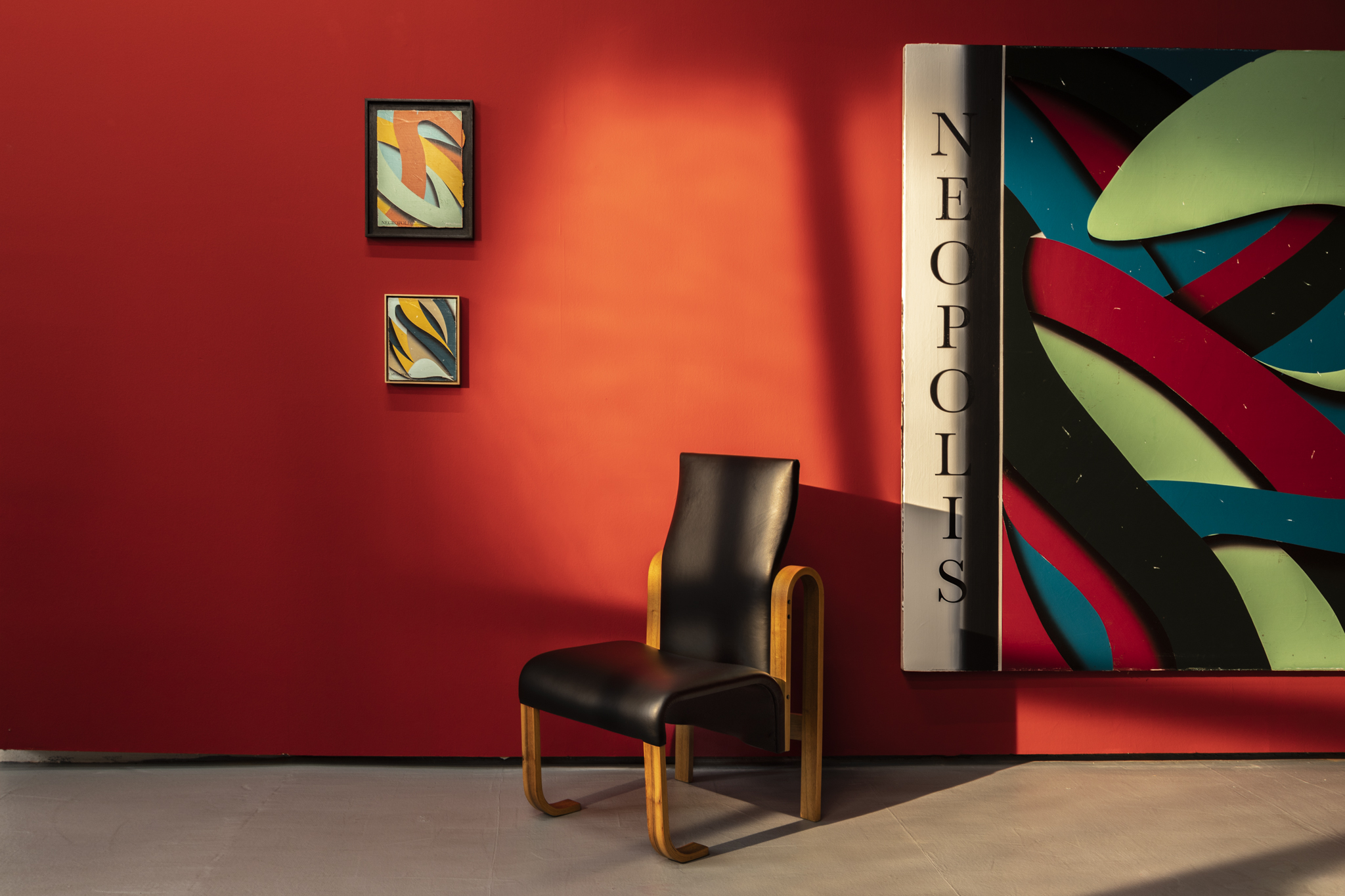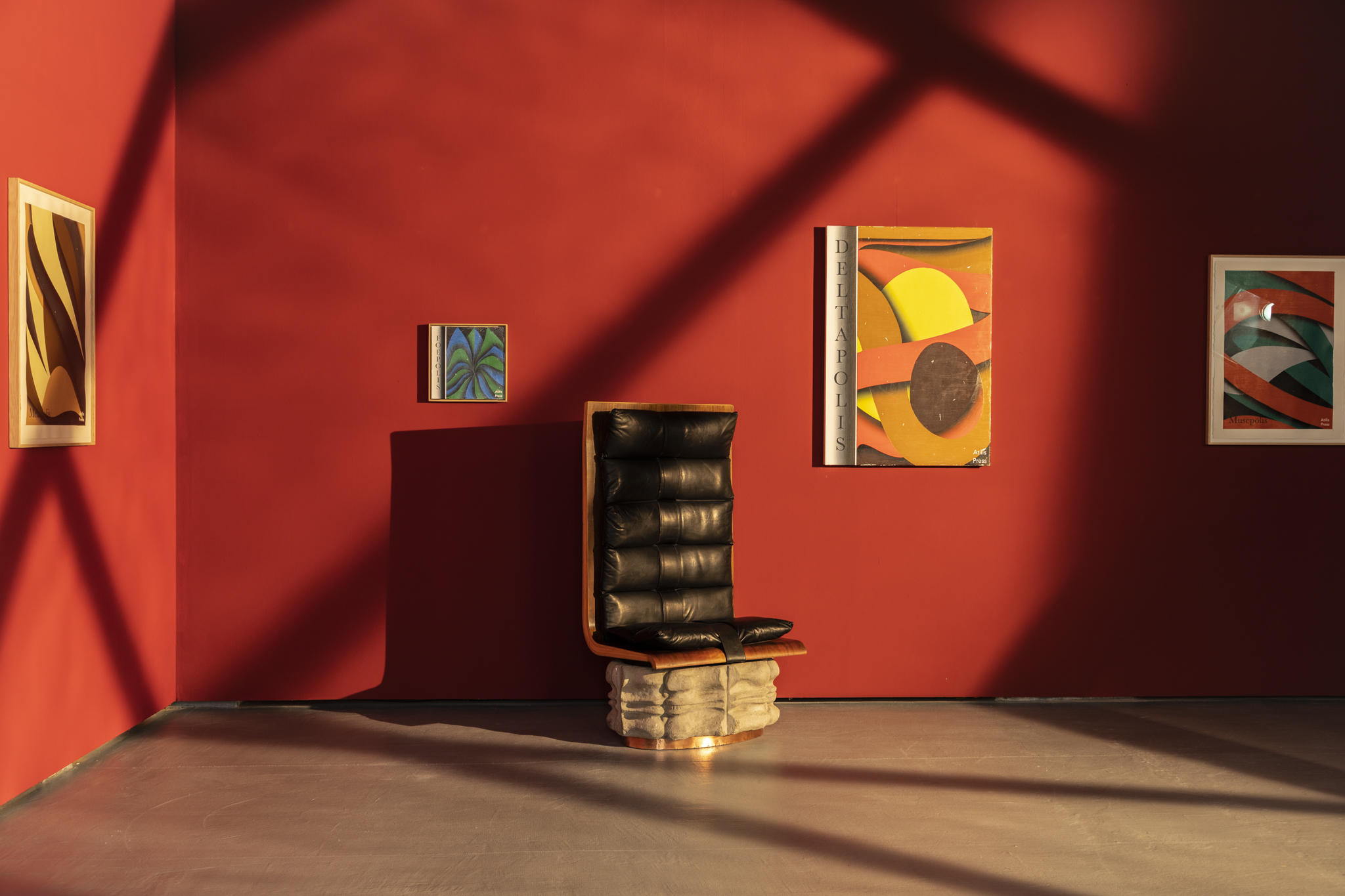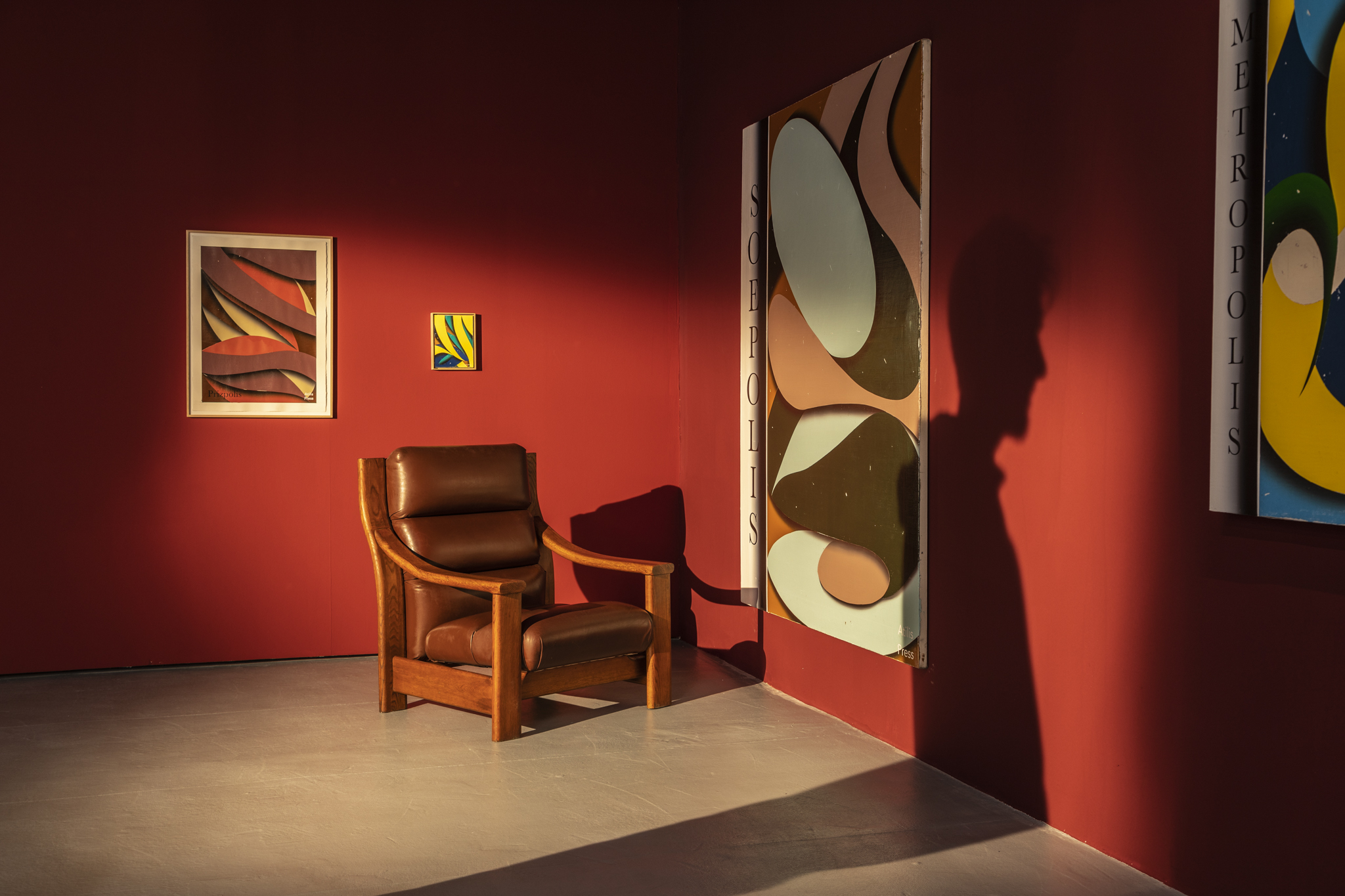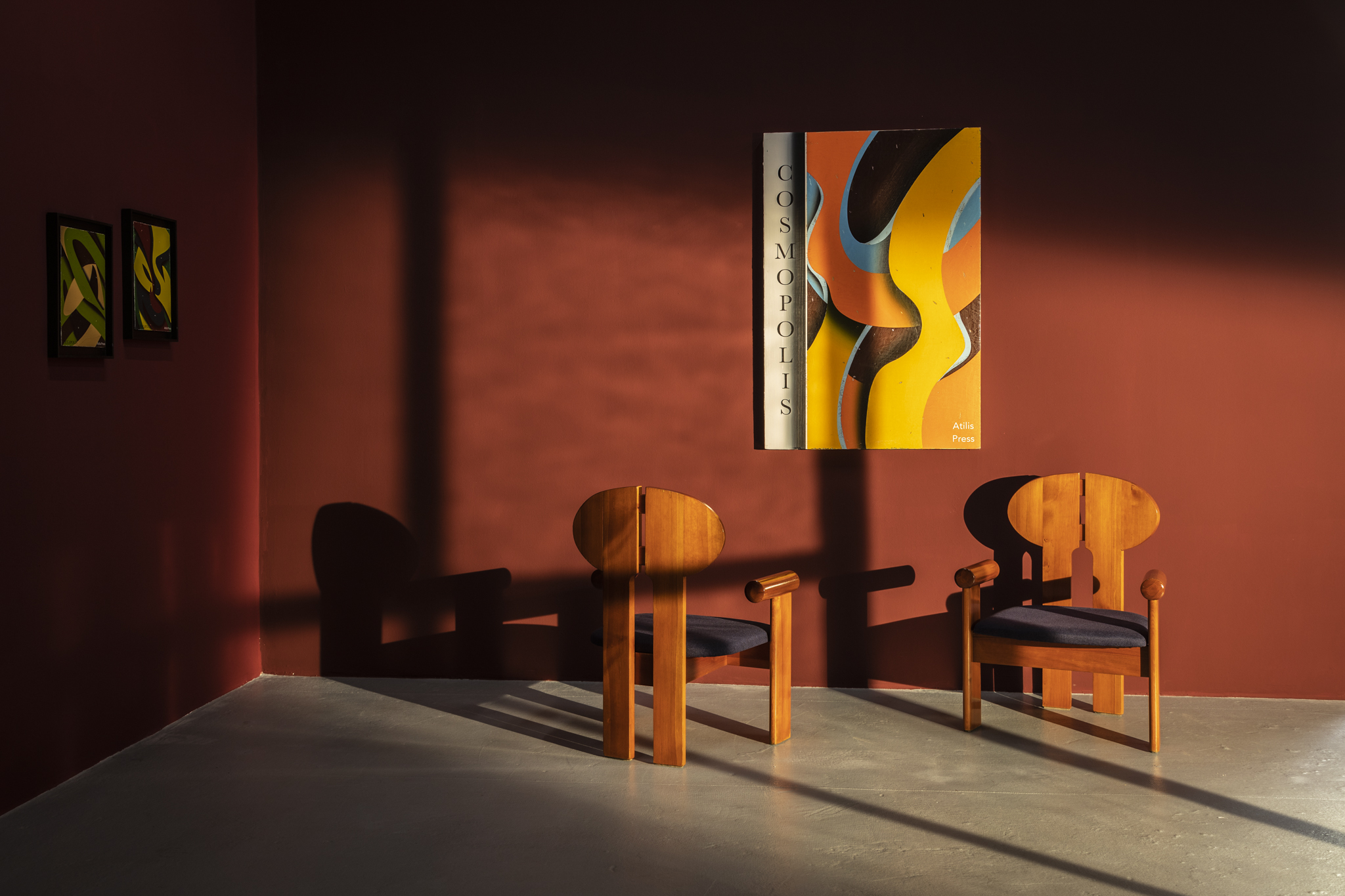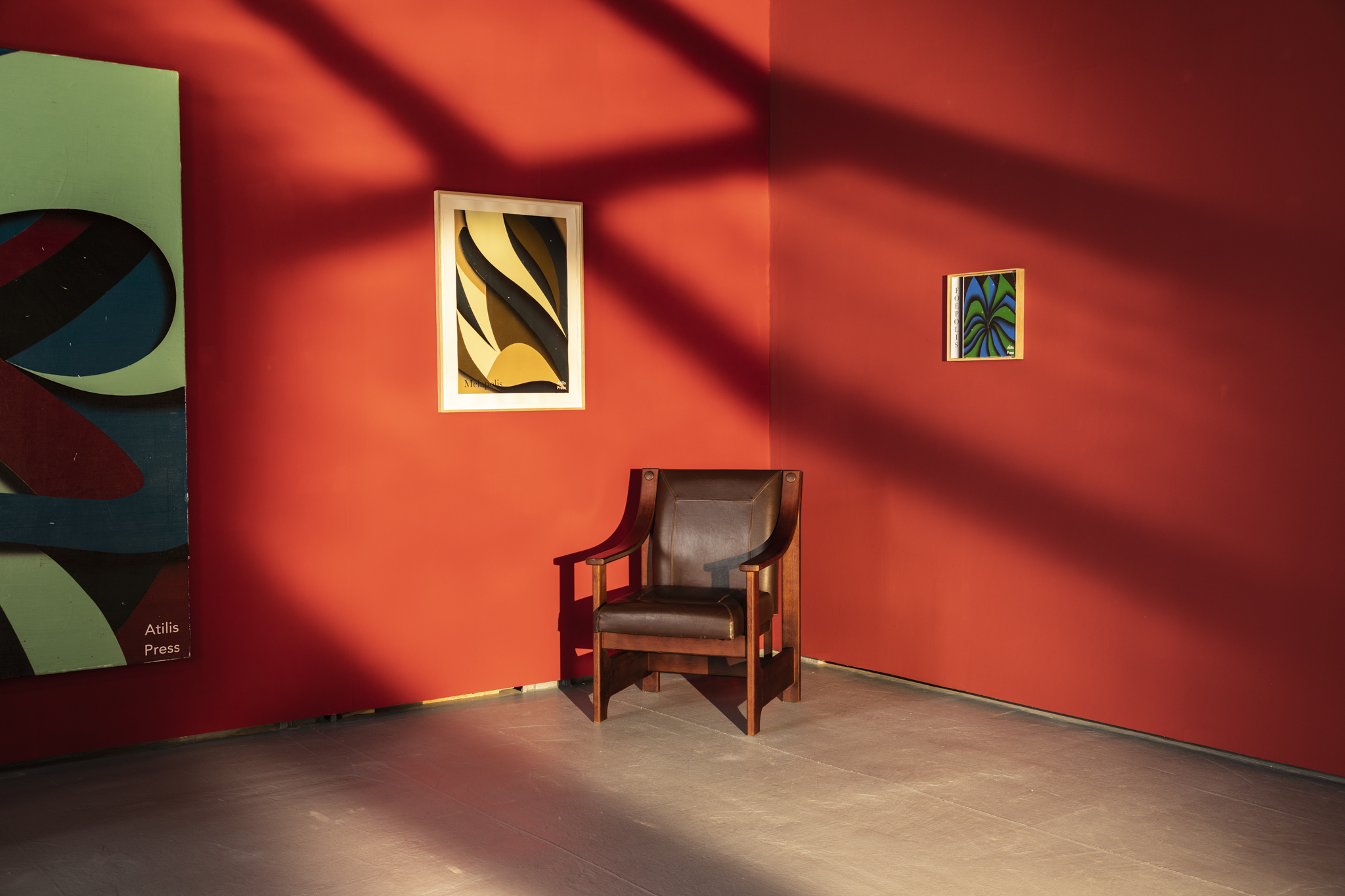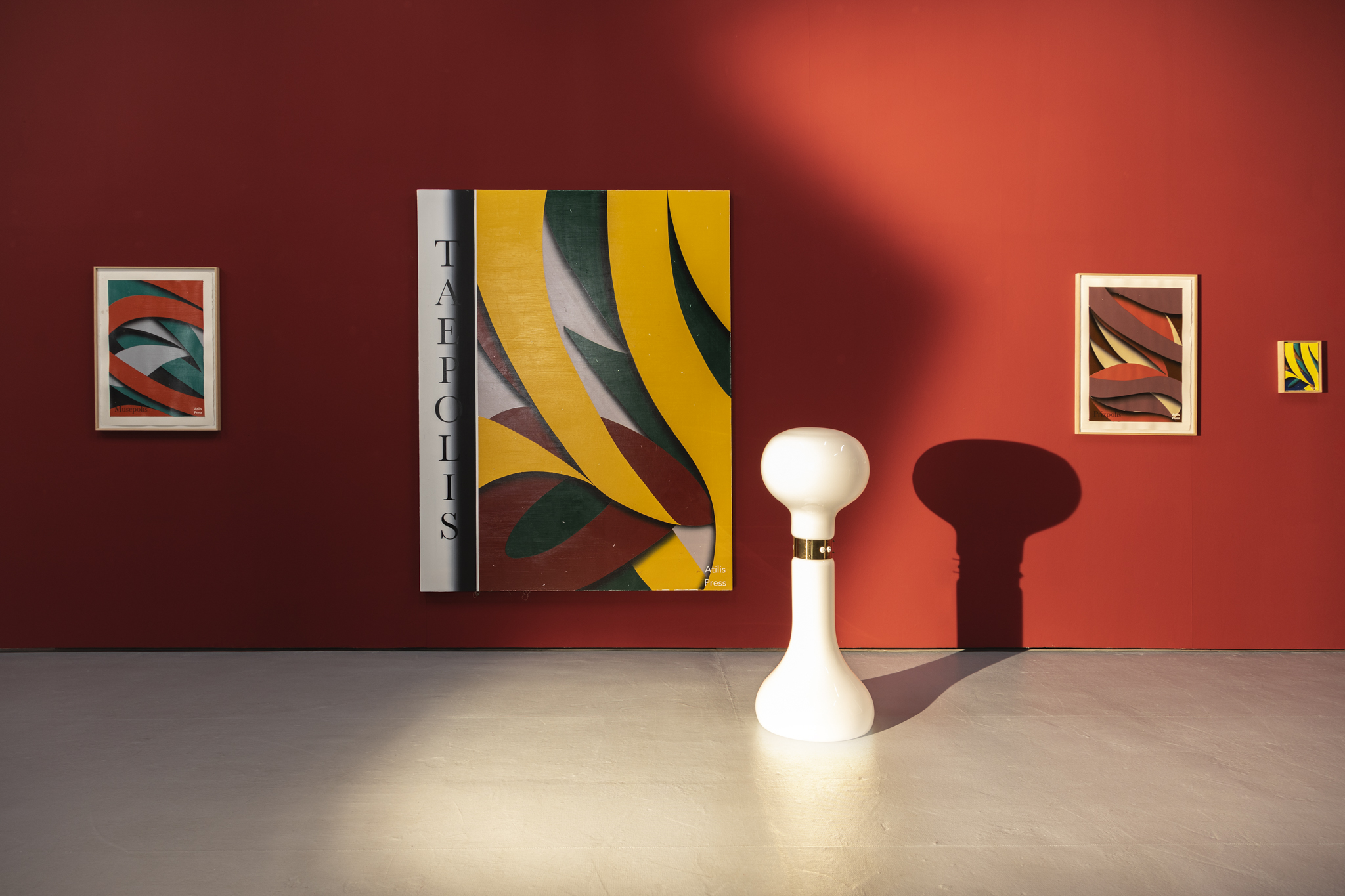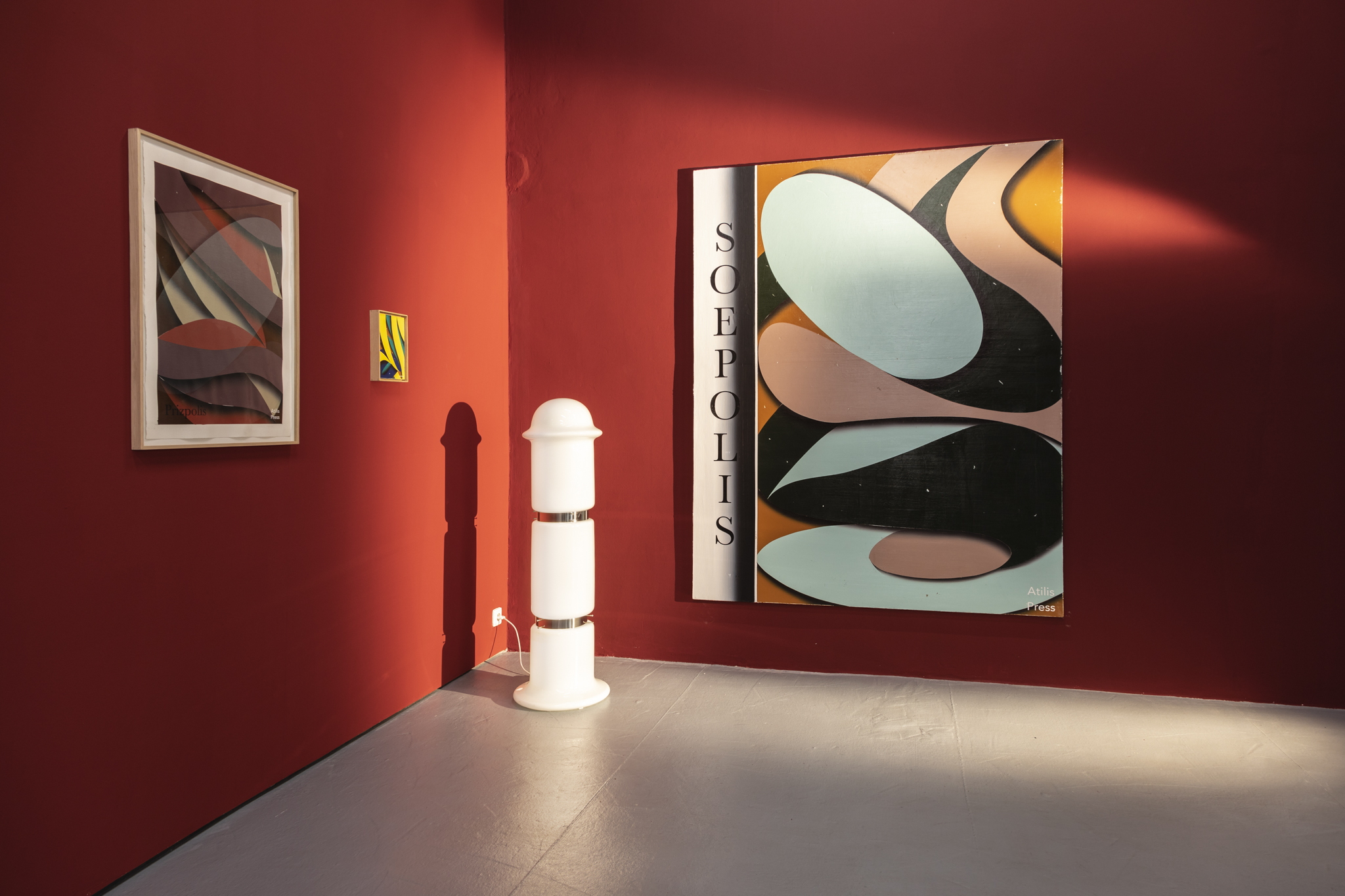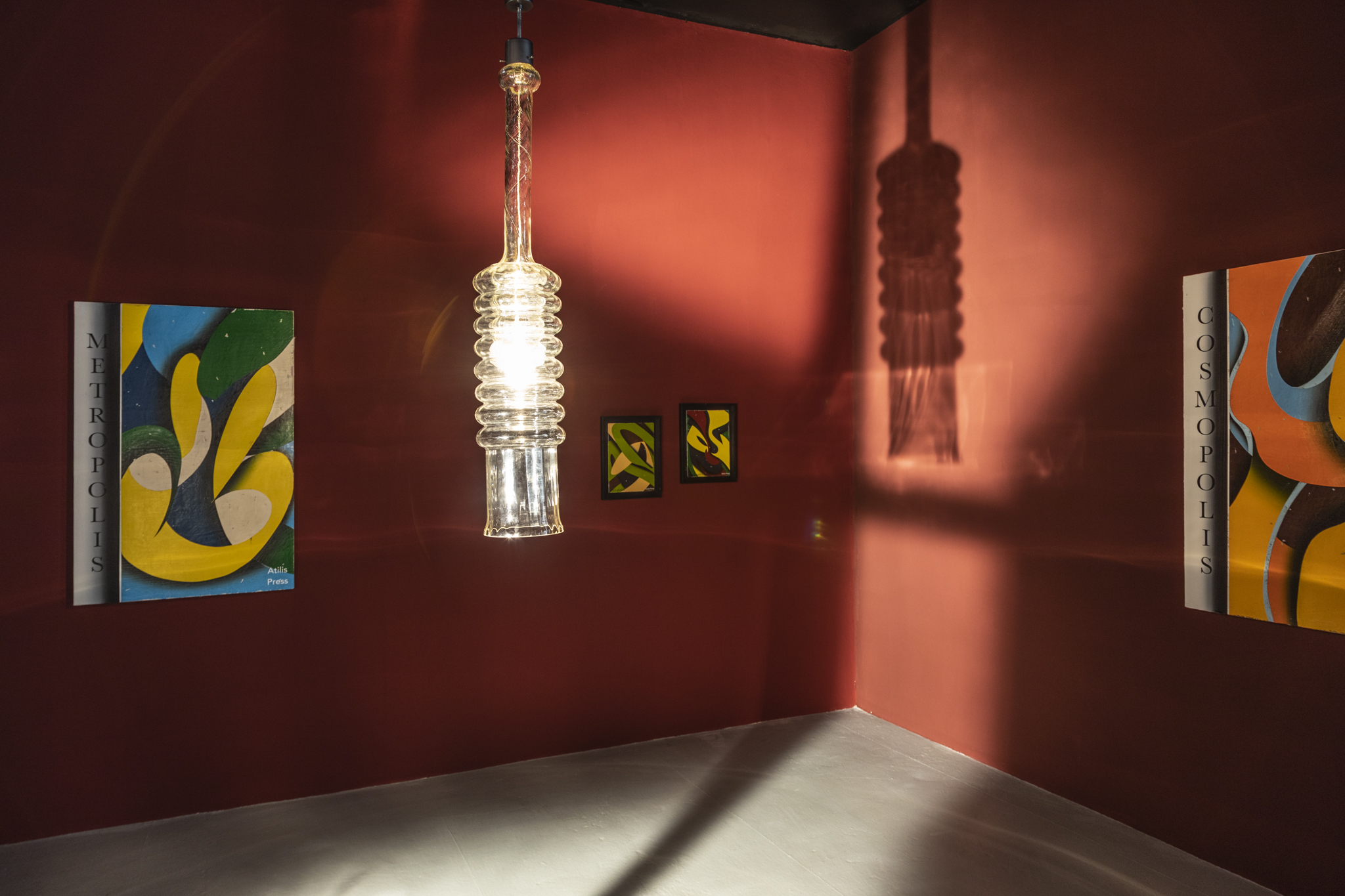Nanovo was born out of an interest in quality architecture and design but also out of a little bit of sentiment. I remember how we used to go admire the structure of Hotel Praha or when we went to the film festival in Karlovy Vary for the first time and walked around the interior of Hotel Thermal in awe and took in the incredible view from the outdoor hotel pool. In fact, the architects who designed Hotel Thermal, Věra Machoninová and Vladimír Machonin, also built their villa in Prague’s Strahov neighbourhood, where Adam and I grew up.
The seventies and eighties saw the construction of some truly unique buildings with complex conceptions. Whole teams or studios worked on the projects, designing the entire structure including the interior, the furnishings, and sometimes even details such as the navigation system, like in Hotel Praha, where the orientation signs were created by renowned Czechoslovak graphic artist Jiří Rathouský. Thus the architects didn’t merely design a building but rather an entire complex work of art – a so-called Gesamtkunstwerk.
We’re happy to present you with a selection of some of the most original furniture from this period created by Czechoslovak architects and designers for projects both here and abroad.
THE FURNITURE OF ARCHITECTS

Interior design of the Czechoslovak Embassy in Stockholm by Jan Bočan
Several pieces of furniture from our collection were designed directly by architects for the buildings they created. Among them is Jan Bočan, who was the primary architect for the construction of the Czechoslovak embassy in Stockholm, Karel Prager, who designed the furniture for several of his buildings, and the husband-and-wife team of Věra Machoninová and Vladimír Machonin, who singularly combined architecture and interior design in their conception for Hotel Thermal.

Armchair from Hotel Thermal, designed by Věra Machoninová and Vladimír Machonin
Iconic club chair designed by architects Věra Machoninová and Vladimír Machonin as a part of the interior of Hotel Thermal in Karlovy Vary. In addition to Hotel Thermal, the husband-and-wife team designed, for example, the Kotva department store in Prague, the embassy building in Berlin, and their own villa in Prague’s Smíchov neighbourhood. This club chair was originally a part of the furnishings in the lobby of the brutalist hotel complex.

Chair from the Czechoslovak embassy in Stockholm, designed by Jan Bočan
Upholstered bentwood chair designed by Jan Bočan for the Czechoslovak embassy in Stockholm and produced by Dřevopodnik Holešov. The embassy was a brutalist structure with a unique interior that was designed by Bočán and many other renowned artists. This chair was created as a part of the furnishings for the embassy’s meeting room.

Prototype TON armchair, designed by Karel Prager
Wooden armchair designed in the 1970s by architect Karel Prager. Prager was a Czech architect and designer of several unique buildings such as the New Stage of the National Theatre, Komerční banka in Prague’s Smíchov neighbourhood, and the Federal Assembly building on Wenceslas Square. He understood architecture as a singular whole connecting interior and exterior. His building designs usually involved the creation of the interiors themselves, including unique furniture.
COLLABORATION BETWEEN ARCHITECTS AND DESIGNERS

Some of the furniture in our collection was designed by renowned artists of the time who were awarded the most prestigious commissions for the furnishing of monumental buildings in Czechoslovakia and abroad. Architects enlisted these artists to carefully complete their designs, turning the entire structures into works of art.
One of them was Olbram Zoubek, who worked together with his wife Eva Kmentová on sculptural decorations for the interior of the now defunct café U Zlatého Hada in Prague. Zoubek created a statue called Eve and the Snake for the café as well as concrete bases for the chairs, and Kmentová crafted two bronze stelae that were placed in the windows.
Another such artist was the interior designer Zbyněk Hřivnáč, who was involved in the furnishing of several buildings in Prague and abroad, the most famous being Hotel Praha, the Waterworks Building, and the Czechoslovak embassies in London and Washington DC. Hotel Praha was a showcase for the regime at the time, a prestigious project that used the best available technologies and materials, and the furnishing of the hotel was entrusted to the best artists. It had chandeliers designed by Ladislav Libeňský, floor lamps by Karel Volf, and ceramic tiling by Štěpán Kotrba. Examples by most of these artists are included in our collection.

Chair from the café U Zlatého Hada in Prague, designed by Olbram Zoubek
A unique chair with a concrete base, designed and built by Olbram Zoubek for the interior of the now defunct café U Zlatého Hada in Prague. The café was located at the corner of the streets Karlova and Liliová from 1974 until the 1990s, when the entire interior was irreparably damaged. The interior was designed by Ivo Loos and Jindřich Malátek, with sculptural work by Olbram Zoubek and Eva Kmentová.
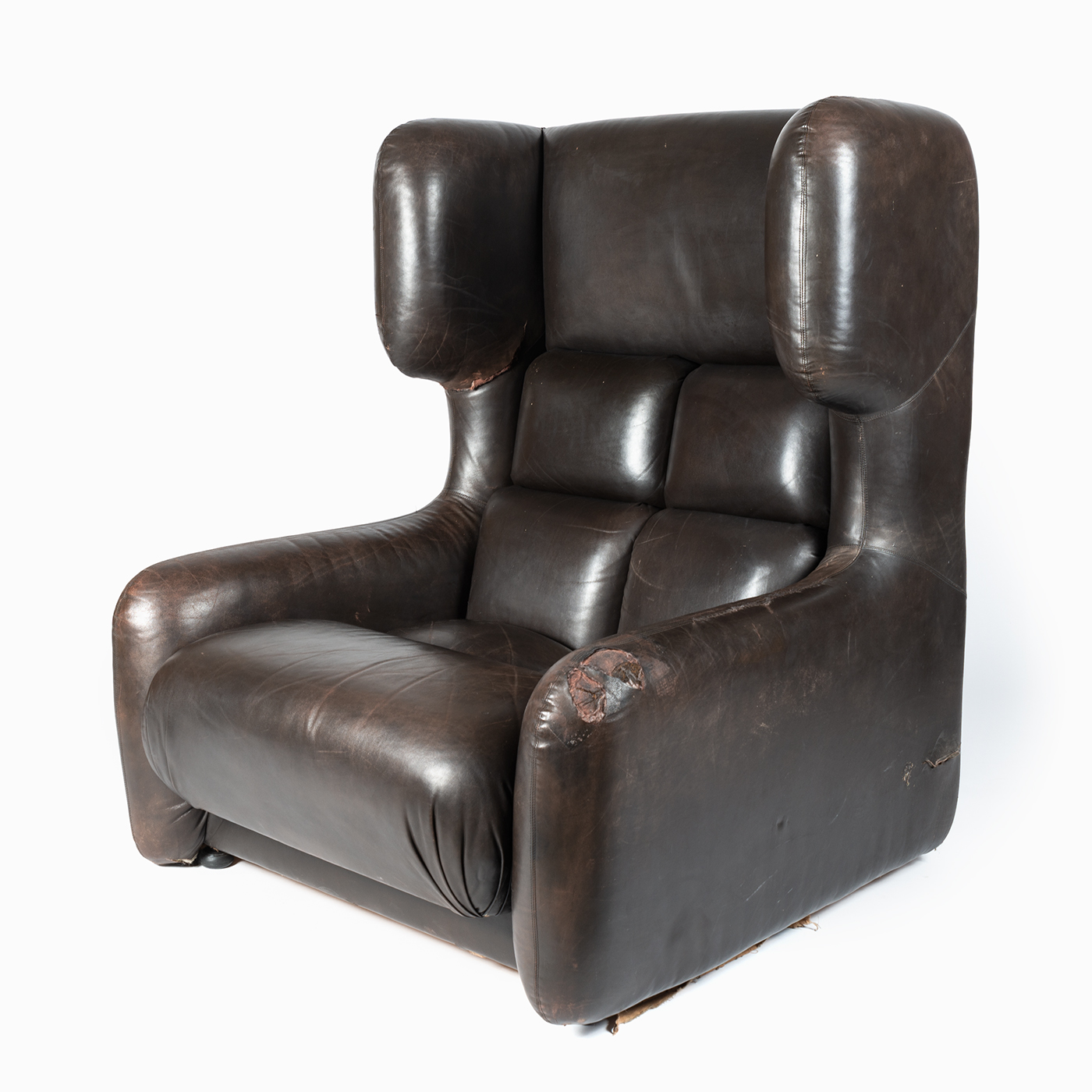
Leather armchair from Hotel Praha, designed by Zbyněk Hřivnáč
Leather club chair created by architect and designer Zbyňek Hřivnáč in 1981 for the brutalist structure hotel Praha in Prague’s Hanspaulka neighbourhood. The hotel provided luxury accommodations in particular for distinguished guests of the Communist Party from the Eastern Bloc. Hotel Praha was demolished in 2014, and its unique interiors full of Czechoslovak design were destroyed.

Armchair from the Waterworks building, designed by Zbyněk Hřivnáč
Wooden armchair with leather upholstery, designed in the 1980s by Zbyněk Hřivnáč. Zbyněk Hřivnáč collaborated on the designs of many important interiors, for example Hotel International in Prague, Hotel Praha, Czech Airlines, and the Czechoslovak embassies in London and Washington DC. One of his last complex projects was the interior of the administrative building of the Vodních staveb.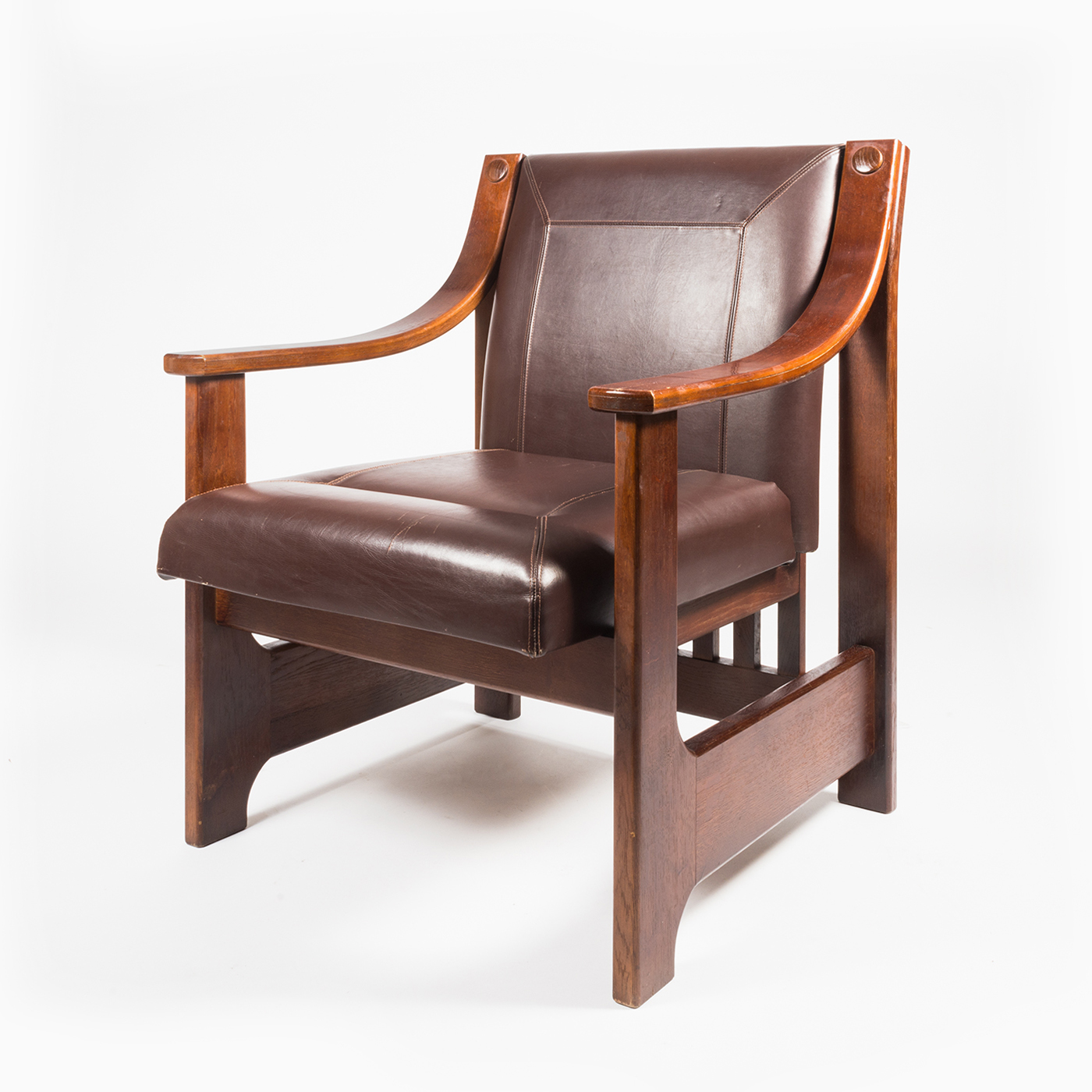
Armchair from the Waterworks building, designed by Zbyněk Hřivnáč
Wooden armchair with leather upholstery, designed in the 1980s by Zbyněk Hřivnáč. Zbyněk Hřivnáč collaborated on the designs of many important interiors, for example Hotel International in Prague, Hotel Praha, Czech Airlines, and the Czechoslovak embassies in London and Washington DC. One of his last complex projects was the interior of the administrative building of the Vodních staveb.

B1 Prominent floor lamp from hotel Praha, designed by Karel Volf
Model B1/15610 Prominent floor lamp, designed in the 1980s by Karel Volf for Hotel Praha. At the time it opened in 1981, Hotel Praha featured some of the most luxurious accommodations in Czechoslovakia. The hotel was demolished in 2014, and this lamp, produced by the company Osvětlovací Sklo Valašské Meziříčí, is one of few surviving items.
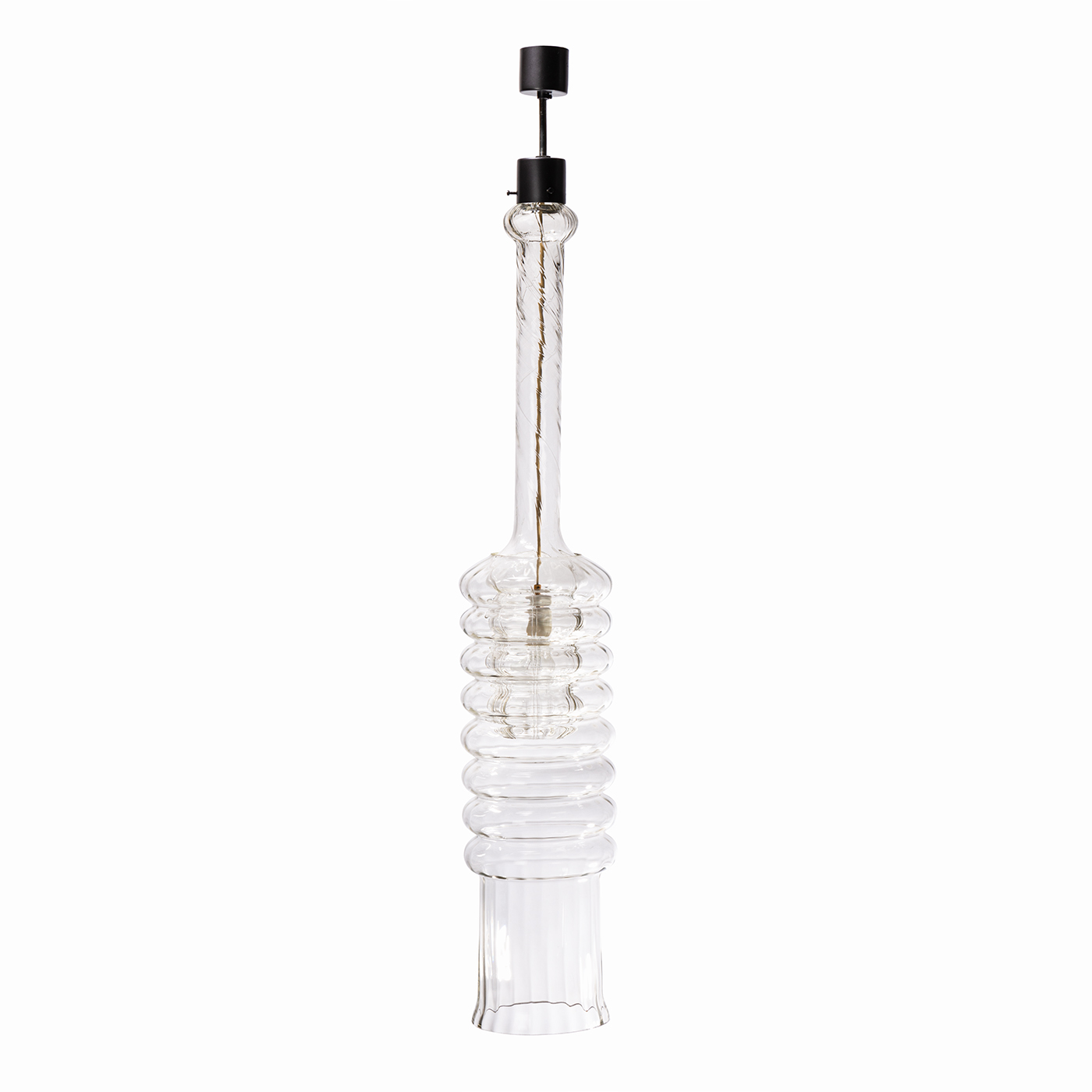
Chandelier from hotel Praha, designed by Stanislav Libenský
Glass chandelier designed by Stanislav Libenský in 1980 for the brutalist hotel Praha in Prague’s Hanspaulka neighbourhood. For much of his life, Stanislav Libenský collaborated with Jaroslava Brychtová. Together they represented Czechoslovak glass art at Expo 58 in Brussels and created monumental objects, so-called glass sculptures for architecture. They designed the stained-glass windows for St. Wenceslas Chapel in Prague Castle as well as the glass object Kontakt for the vestibule of the Národní třída metro station. For hotel Praha, they created the lighting sculpture Vlys (Frieze) and glass chandeliers which were a part of the furnishings in several spaces in the hotel.
AUTHOR UNKNOWN

Český rozhlas Prague
There are many gaps in the history of Czechoslovak design. In the seventies and eighties, an artist’s name didn’t function as a brand like it does today. Many designs are attributed to the wrong artist, or the author is simply unknown, as is the case with some armchairs and a coffee table with a shape reminiscent of the grille of a classic microphone, made for the studios of Czech Radio. Our collection also includes some armchairs from the Museum of the Fojtství in Kopřivice, which were a part of the local library there. And in the case of one of our glass floor lamps, we only know that it was produced by the company Osvětlovacího Sklo Valašské Meziříčí.
Wooden coffee table from the Czech Radio building
Atypical coffee table from the 1960s, originally part of the furnishings of the studios of Czech Radio on Vinohradská street in Prague.

Wooden armchair from the Tatra Museum in Kopřivnice
Wooden armchair from the 1980s, originally from the Tatra Museum (today the Museum of the Fojtství) in Kopřivnice. When the building was renovated and converted into a museum in the 1990s, the original furnishings, of which this chair was a part, were lost.
More about the chair here.

Glass floor lamp model OS-S 02/001
Glass floor lamp designed in the 1960s for the company Osvětlovací Sklo in Valašské Meziříčí. The glassworks there was founded in 1854 and was among the largest manufacturers of lighting glass in the Austro-Hungarian Empire, primarily producing layered glass. The glassworks unfortunately closed in 2003.
The photographs were taken at the Polansky Gallery, which is currently hosting Vladimír Houdek’s exhibition Polis.
Polansky Gallery
17. 2. 2022 - 30. 4. 2022
Curated by Filip Šenk
Photos by Dita Havránková and Damián Skořepa
